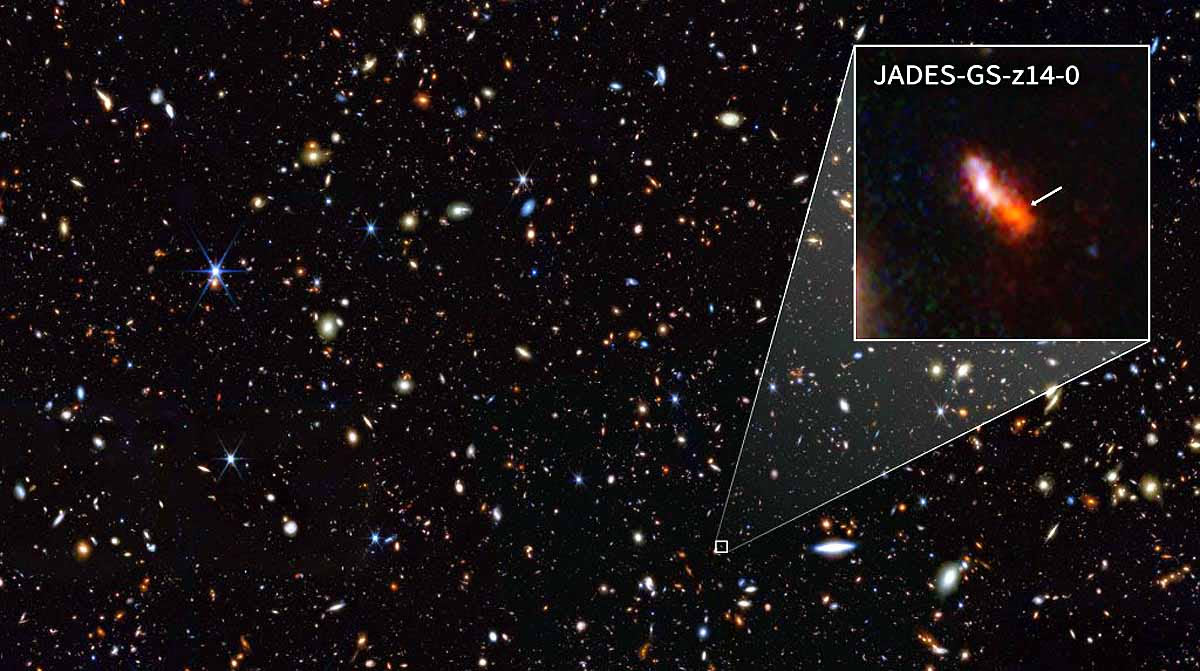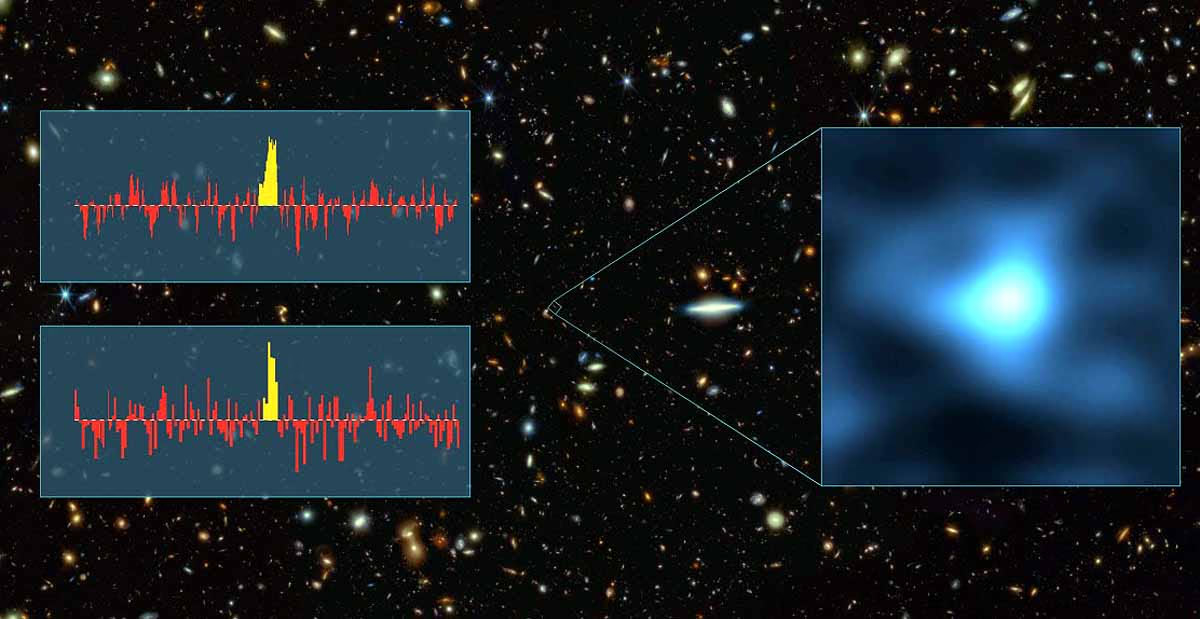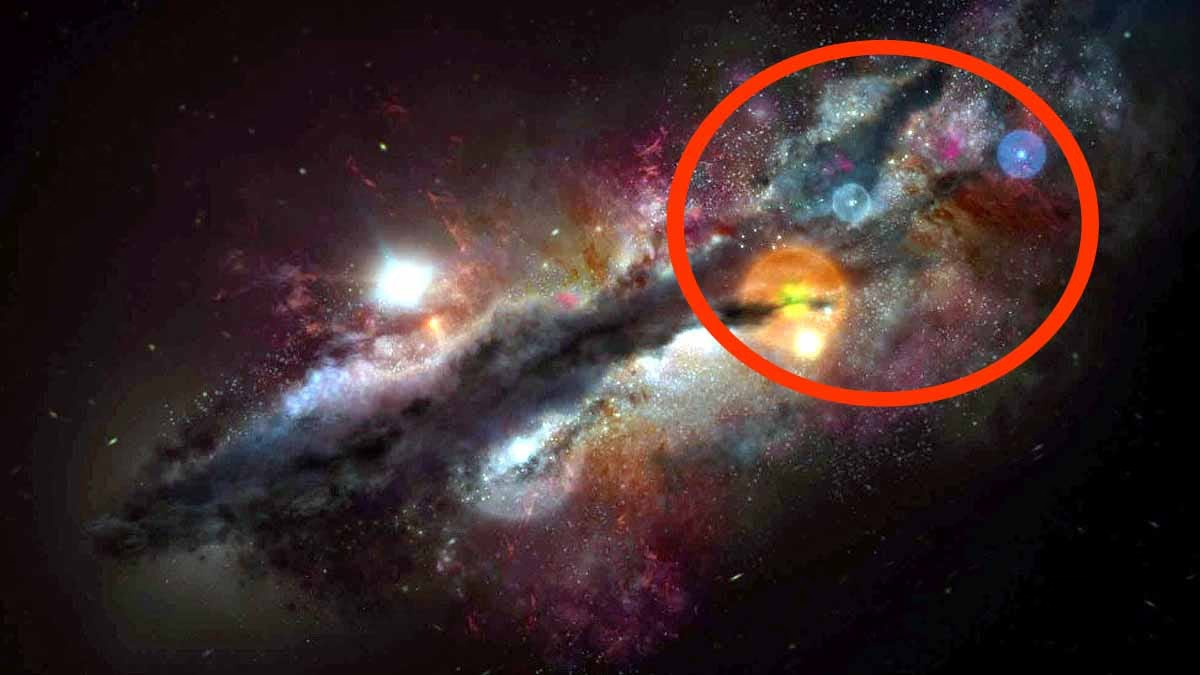Just 300 million years following the Big Bang, the galaxy JADES-GS-z14-0 was discovered to have abundant oxygen. This revelation is astonishing to scientists, who had believed other elements would take longer to form compared to hydrogen and helium.
Oxygen is forged within stellar cores through hydrogen fusion, a process that requires significant time. Discovered by the James Webb Space Telescope in 2024, the light from JADES-GS-z14-0 took approximately 13.4 billion years to reach us.
Read More:
This galaxy's oxygen abundance was unveiled by the Atacama Large Millimeter/submillimeter Array (ALMA). This discovery has the potential to transform our understanding of the universe's origins and development. Scientists are now tasked with deciphering how such rapid oxygen formation occurred and the swift evolutionary pace of this galaxy.

Source: aajtak
A Rapidly Forming, Quickly Growing Galaxy
Cosmologist Sander Schouws from the Netherlands' Leiden Observatory remarked, "It's like finding a teenager where you only expect infants." The galaxy is forming and maturing at an expedited rate, which is astonishing.
The existence of JADES-GS-z14-0 challenges our cosmic models, as galaxies are expected to take considerable time to develop. It is so distant that it requires immense and radiant light to be observable, located 13.4 billion light-years away.
Further Reading:

Source: aajtak
Oxygen Formation Takes Millions of Years
Another time-consuming process is the production of heavy elements from hydrogen and helium. After the Big Bang, the universe's first elements were hydrogen and helium. The first stars formed and became hot and dense enough to transmute hydrogen into heavier elements like oxygen. However, for these elements to scatter into space, stars must live out their life cycles and die in grand explosions, a process that can span millions of years.
When scientists in Chile analyzed the JADES-GS-z14-0 galaxy, they found the amount of heavy elements like oxygen was ten times more than expected based on hydrogen and helium. This finding demonstrates that element formation occurred much more rapidly than anticipated.




